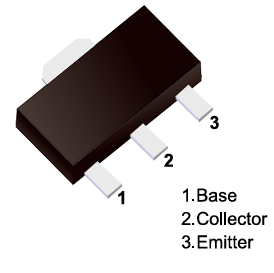Analysis of Small-Signal Transistors
Date:2025-06-20 Categories:Product knowledge Hits:394 From:Guangdong Youfeng Microelectronics Co., Ltd
Small-signal transistors play a vital role in modern electronic systems, serving as fundamental building blocks for signal amplification, switching, and other signal - processing functions. Their ability to handle and manipulate small - amplitude electrical signals with high efficiency and precision makes them indispensable in applications ranging from audio amplifiers to radio frequency (RF) circuits. Analyzing small - signal transistors involves understanding their characteristics, parameters, and how they interact with the surrounding circuit elements. This analysis is essential for designing, optimizing, and troubleshooting transistor - based circuits.
2. Transistor Basics
2.1 Transistor Types
The two most common types of transistors used in
Small-signal transistors applications are bipolar junction transistors (BJTs) and field - effect transistors (FETs). BJTs are current - controlled devices, where the collector current (IC) is controlled by the base current (IB) in the case of an NPN or PNP configuration. FETs, on the other hand, are voltage - controlled devices. For metal - oxide - semiconductor field - effect transistors (MOSFETs), the drain current (ID) is controlled by the gate - source voltage (VGS).
2.2 Transistor Operation Regions
Both BJTs and FETs can operate in different regions. In BJTs, these regions include the cutoff region, the active region, and the saturation region. In the cutoff region, the base - emitter junction is reverse - biased, and very little current flows through the transistor. In the active region, the transistor acts as an amplifier, with
IC=βIB(whereβis the current gain). In the saturation region, the collector - emitter voltage (VCE) is very low, and the transistor acts like a closedswitch.
For FETs, the main operation regions are the cutoff region, the triode region,
Small-signal transistors and the saturation region (also known as the pinch - off or active region). In the cutoff region,
IDis negligible. In the triode region,IDis a function of bothVGSandVDS
(drain - source voltage), and in the saturation region,IDis mainly determined byVGSand is relatively independent ofVDS.

Previous:
Classification, Structure, and Principle of MOSFET
Next:
Small - Signal Model Parameters
